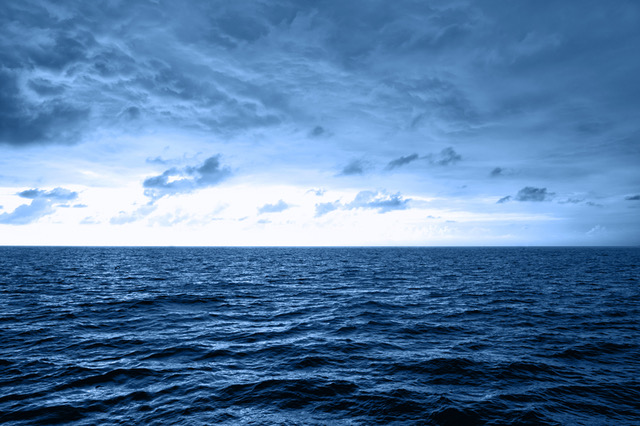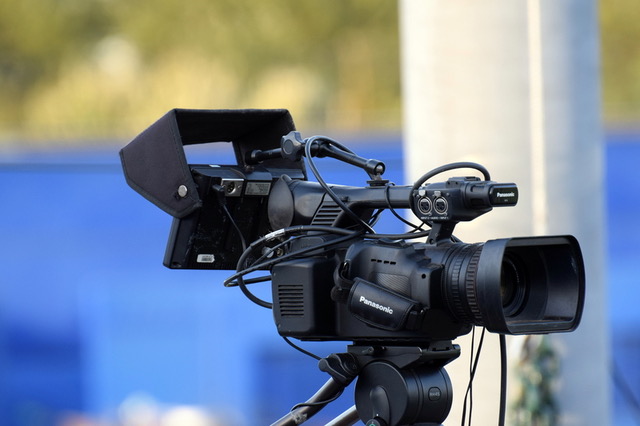
-
 Sony logs 18% annual net profit jump, forecast cautious
Sony logs 18% annual net profit jump, forecast cautious
-
China, US to lift sweeping tariffs in trade war climbdown

-
 Asian markets swing as China-US trade euphoria fades
Asian markets swing as China-US trade euphoria fades
-
Australian seaweed farm tackles burps to help climate

-
 Judgment day in EU chief's Covid vaccine texts case
Judgment day in EU chief's Covid vaccine texts case
-
Trump set to meet Syrian leader ahead of Qatar visit

-
 Misinformation clouds Sean Combs's sex trafficking trial
Misinformation clouds Sean Combs's sex trafficking trial
-
'Panic and paralysis': US firms fret despite China tariff reprieve

-
 Menendez brothers resentenced, parole now possible
Menendez brothers resentenced, parole now possible
-
'Humiliated': Combs's ex Cassie gives searing testimony of abuse

-
 Latin America mourns world's 'poorest president' Mujica, dead at 89
Latin America mourns world's 'poorest president' Mujica, dead at 89
-
Masters champion McIlroy to headline Australian Open

-
 Sean Combs's ex Cassie says he coerced her into 'disgusting' sex ordeals
Sean Combs's ex Cassie says he coerced her into 'disgusting' sex ordeals
-
McIlroy, Scheffler and Schauffele together for rainy PGA battle

-
 Uruguay's Mujica, world's 'poorest president,' dies aged 89
Uruguay's Mujica, world's 'poorest president,' dies aged 89
-
Lift-off at Eurovision as first qualifiers revealed

-
 Forest striker Awoniyi placed in induced coma after surgery: reports
Forest striker Awoniyi placed in induced coma after surgery: reports
-
'Kramer vs Kramer' director Robert Benton dies: representative

-
 Tatum suffered ruptured right Achilles in playoff defeat: Celtics
Tatum suffered ruptured right Achilles in playoff defeat: Celtics
-
US stocks mostly rise on better inflation data while dollar retreats

-
 Winning farewell for Orlando Pirates' Spanish coach Riveiro
Winning farewell for Orlando Pirates' Spanish coach Riveiro
-
Lift-off at Eurovision as first semi-final takes flight

-
 UN relief chief urges action 'to prevent genocide' in Gaza
UN relief chief urges action 'to prevent genocide' in Gaza
-
Baseball pariahs Rose, Jackson eligible for Hall of Fame after league ruling

-
 Scheffler excited for 1-2-3 group with McIlroy, Schauffele
Scheffler excited for 1-2-3 group with McIlroy, Schauffele
-
Sean Combs's ex Cassie says he forced her into 'disgusting' sex ordeals

-
 Uruguay's 'poorest president' Mujica dies aged 89
Uruguay's 'poorest president' Mujica dies aged 89
-
Senior UN official urges action 'to prevent genocide' in Gaza

-
 'Kramer vs Kramer' director Robert Benton dies: report
'Kramer vs Kramer' director Robert Benton dies: report
-
Sinner moves through gears to reach Italian Open quarters

-
 Massages, chefs and trainers: Airbnb adds in-home services
Massages, chefs and trainers: Airbnb adds in-home services
-
Republicans eye key votes on Trump tax cuts mega-bill

-
 Brazil legend Marta returns for Japan friendlies
Brazil legend Marta returns for Japan friendlies
-
McIlroy, Scheffler and Schauffele together to start PGA

-
 Jose Mujica: Uruguay's tractor-driving leftist icon
Jose Mujica: Uruguay's tractor-driving leftist icon
-
Uruguay's ex-president Mujica dead at 89

-
 It's showtime at Eurovision as semis begin
It's showtime at Eurovision as semis begin
-
DeChambeau says '24 PGA near miss a major confidence boost

-
 Gaza, Trump dominate politically charged Cannes Festival opening
Gaza, Trump dominate politically charged Cannes Festival opening
-
Carney says new govt will 'relentlessly' protect Canada sovereignty

-
 Gaza rescuers says Israeli strikes kill 28 near hospital
Gaza rescuers says Israeli strikes kill 28 near hospital
-
Schauffele still has something to prove after two major wins

-
 US inflation cooled in April as Trump began tariff rollout
US inflation cooled in April as Trump began tariff rollout
-
US reverses Biden-era export controls on advanced AI chips

-
 Trump, casting himself as peacemaker, to lift Syria sanctions
Trump, casting himself as peacemaker, to lift Syria sanctions
-
US Ryder Cup captain Bradley eyes LIV's Koepka, DeChambeau

-
 Musetti battles Medvedev and match-point rain delay to reach Rome quarters
Musetti battles Medvedev and match-point rain delay to reach Rome quarters
-
Rights groups urge court to halt UK fighter jet supplies to Israel

-
 Steamy excitement at Eurovision contest
Steamy excitement at Eurovision contest
-
Forest hit back over criticism of owner Marinakis over Nuno clash


Billion-light-year-wide 'bubble of galaxies' discovered
Astronomers have discovered the first "bubble of galaxies," an almost unimaginably huge cosmic structure thought to be a fossilised remnant from just after the Big Bang sitting in our galactic backyard.
The bubble spans a billion light years, making it 10,000 times wider than the Milky Way galaxy.
Yet this giant bubble, which cannot be seen by the naked eye, is a relatively close 820 million light years away from our home galaxy, in what astronomers call the nearby universe.
The bubble can be thought of as "a spherical shell with a heart," Daniel Pomarede, an astrophysicist at France's Atomic Energy Commission, told AFP.
Inside that heart is the Bootes supercluster of galaxies, which is surrounded by a vast void sometimes called "the Great Nothing".
The shell contains several other galaxy superclusters already known to science, including the massive structure known as the Sloan Great Wall.
Pomarede said the discovery of the bubble, which is described in research he co-authored that was published in The Astrophysical Journal this week, was "part of a very long scientific process".
It confirms a phenomenon first described in 1970 by US cosmologist -- and future physics Nobel winner -- Jim Peebles.
He theorised that in the primordial universe -- then a stew of hot plasma -- the churning of gravity and radiation created sound waves called baryon acoustic oscillations (BAOs).
As the sound waves rippled through the plasma, they created bubbles.
Around 380,000 years after the Big Bang the process stopped as the universe cooled down, freezing the shape of the bubbles.
The bubbles then grew larger as the universe expanded, similar to other fossilised remnants from the time after the Big Bang.
Astronomers previously detected signals of BAOs in 2005 when looking at data from nearby galaxies.
But the newly discovered bubble is the first known single baryon acoustic oscillation, according to the researchers.
- 'Unexpected' -
The astronomers called their bubble Ho'oleilana -- "sent murmurs of awakening" -- taking the name from a Hawaiian creation chant.
The name came from the study's lead author Brent Tully, an astronomer at the University of Hawaii.
The bubble was discovered by chance, as part of Tully's work searching through new catalogues of galaxies.
"It was something unexpected," Pomarede said.
Tully said in a statement that the bubble is "so huge that it spills to the edges of the sector of the sky that we were analysing".
The pair enlisted the help of Australian cosmologist and BAO expert Cullan Howlett, who "mathematically determined the spherical structure which best corresponded to the data provided," Pomarede said.
This allowed the trio to visualise the three-dimensional shape of Ho'oleilana -- and the position of the archipelagos of galaxies inside it.
It may be the first, but more bubbles could soon be spotted across the universe.
Europe's Euclid space telescope, which launched into July, takes in a wide view of the universe, potentially enabling it to snare some more bubbles.
Massive radio telescopes called the Square Kilometre Array, being built in South Africa and Australia, could also offer a new image of galaxies from the viewpoint of the Southern Hemisphere, Pomarede said.
M.A.Colin--AMWN